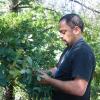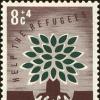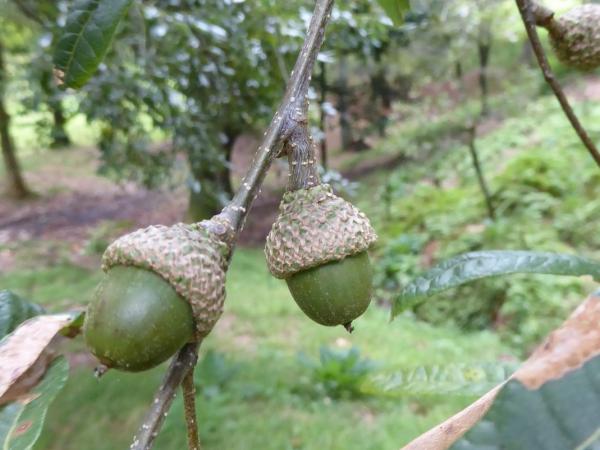Editor's Picks
Plant Focus
In Search of Sessile Oak (Quercus petraea) in Germany
Last year, Sylvia and I went on a three-day holiday to visit some friends who own a camping site near the city of Bitburg (where the famous beer Bitburger comes from) in Germany, a three-hour drive from where I live.
Due to logging, Quercus petraea, in its pure form, has become very rare in the Netherlands, and only occurs sparsely near the German border. I always wanted to see ‘the other’ native oak in its pure form, because when you find one in the forest, it is very likely hybridized by Quercus robur, resulting in the natural hybrid (Q. ×rosacea).

We stopped a couple of times in a forest-rich area, so I checked if I already could see a glimpse of a sessile oak. Many of the oaks were indeed a mix between Q. petraea and Q . robur, with short petioles on the leaves and short petioles on the acorns, resembling Q. ×rosacea.
After leaving the highway to drive the last part of the trip, I tried to identify the trees we were driving under, and I could see beech (Fagus sylvatica), Chestnut (Castanea sativa) and many oaks, probably still a mix of both natives…
After arriving on the camp site, and setting up the tent, I couldn’t resist checking out the nearby forests. So after eating something I packed my bag for my first adventure in the slightly montane area, in search of pure Q. petraea. As I was ascending to the top of a nearby hill, I started to notice oak seedlings, slightly different from the ones I knew from my home area, so I took a sample of them with me. As we all know, oaks are very different as seedlings, I couldn’t identify it right away, but I had a feeling I was closing in on my target  . But still, I couldn’t find any mature specimen of any oak, must be the damn squirrels planting acorns! There were sweet chestnuts as well, but also no mature trees (I was hoping for some delicious chestnuts as well). A little disappointed, I headed back to the camp site to drink something, as the weather was nice, and still quite warm for September.
. But still, I couldn’t find any mature specimen of any oak, must be the damn squirrels planting acorns! There were sweet chestnuts as well, but also no mature trees (I was hoping for some delicious chestnuts as well). A little disappointed, I headed back to the camp site to drink something, as the weather was nice, and still quite warm for September.

The same afternoon, I decided to go for another walk, this time a little further, and taking different route, to see if I could be lucky this time! As I walked through the forest, I began to notice fallen oak leaves with…YES, a long petiole. I was close, but still I couldn’t find the tree, maybe someone was fooling with me, I thought. A little frustrated I headed back again and decided not to search anymore in that area, so I went back at the camp site and took some local beers!

Next day, I got up early, and still I couldn’t resist going out for a walk again. This time I wanted to drive a short distance and head into the forest a couple of miles away from the camp site. As I was enjoying the sunrise and the fresh air, I looked up the very same hill I could see from the camp site, and noticed some very large trees just on the top of the hill, with a very straight trunk, and slightly upward branching, but I couldn’t identify them properly because I was staring straight in the sun. I decided to check them out…
As I was close to the top, the oak leaves on the path became less scarce, I knew I was very close now. And there they stood, three mature sessile oak specimens, together with some sweet chestnuts, of course! All seedlings seen on the way to the top, were acorns and nuts that had rolled off the hill and germinated on the slopes. I collected some leaf samples and acorns for my herbarium and specimen collection. They wouldn’t be pure enough to produce pure Q. petraea seedlings after all, I thought!
After finding these trees, I began to notice other specimens on different places as well, and came to realize ,they were everywhere! I collected different samples and acorns, and have some very nice pure seedlings growing in my collection, MISSION ACCOMPLISHED!
Sometimes a good night’s rest, and knowing where to look at, is the key to finding what you’re looking for…
















